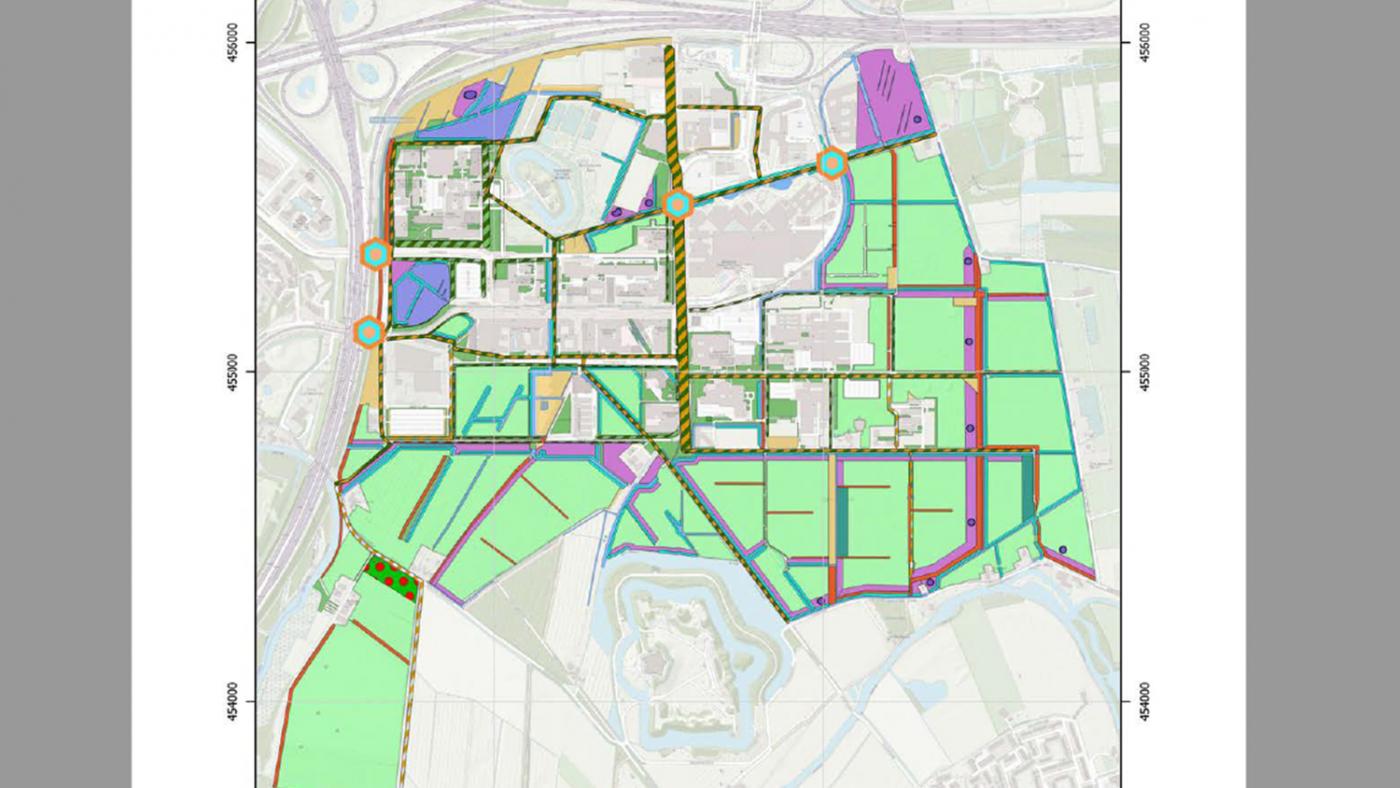Improving biodiversity on campus
Science Park to get special ‘lanes’ for plants and animals
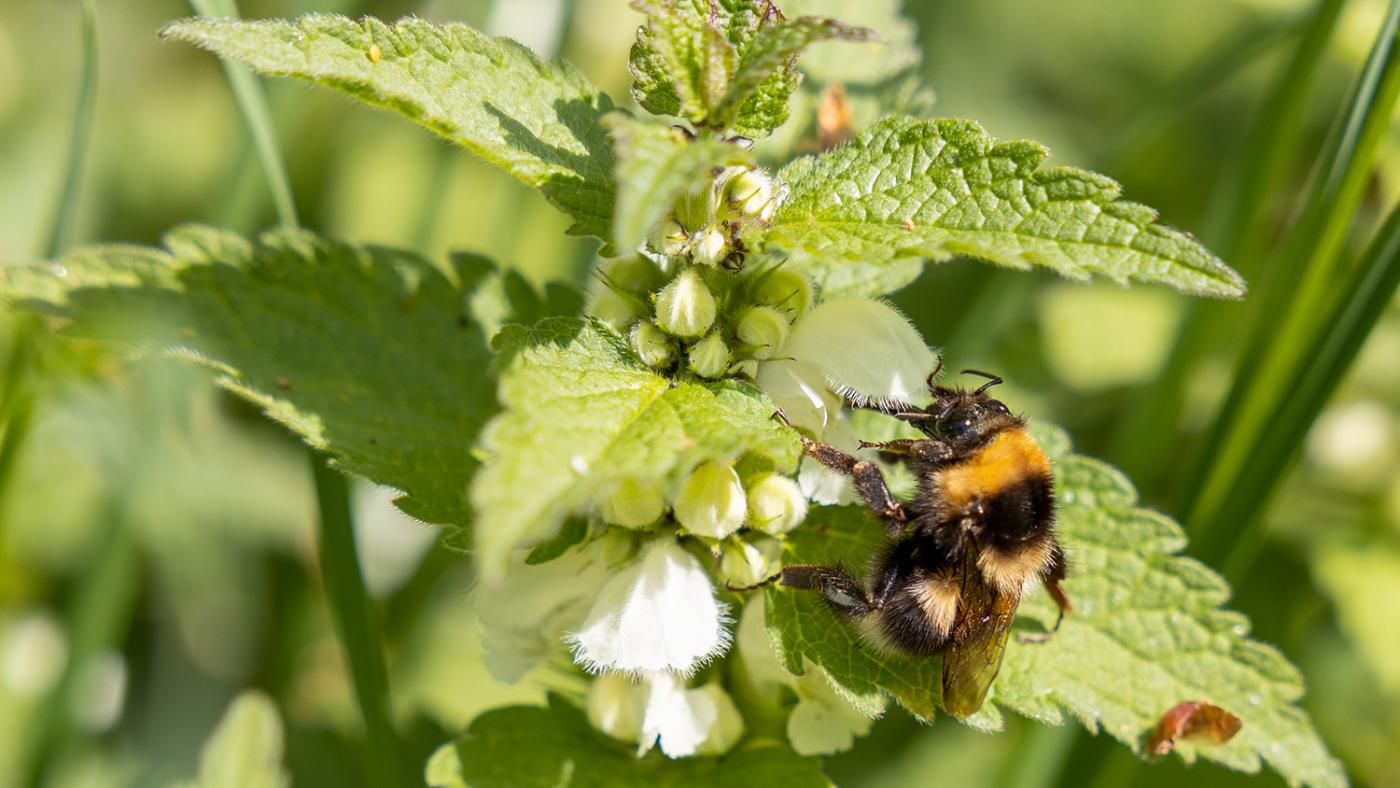
UU's education, research and business policies are guided by the 17 Sustainable Development Goals. In this light, the university joined the Delta plan for the Restoration of Biodiversity at the end of 2020 and the wrote in its Strategic Plan 2021-2025 that it wants to increase biodiversity in its grounds. To achieve this aim, the so-called Development and Maintenance plan on Biodiversity (document available in Dutch only, Ed.) was developed.
The plan was devised taking the current state of affairs into account. How much green and water is there in the 350 hectares of the Science Park and what would be desirable? Based on these facts, a “realistic plan” was written, explains Dorinne Raaimakers, Project Manager for Biodiversity in the Sustainability programme. “Before the university established itself here, in the 1960s, this area used to be a river landscape with several orchards. Now, with all the buildings and the people that come here, it’s not realistic to say we want to make the area look like that again. That's just impossible. But, with the plan we have now, we believe that a number of plants and animals that used to be seen in this are will return and stay here permanently.”
In the original landscape, badgers, partridges and nightingales felt at home in what was then called Johannapolder. The land consolidation that took place in the 1950s made for more extensive plots of land. Now that the university is based here, the area is petrified. Combined, the land consolidations and all the buildings from the university, the university of applied sciences, as well as those dedicated to research and student housing, ended up causing significant consequences for the flora and fauna of the area. And that's not just the Science Park: the woods of Amelisweerd, Sandwijck and Oostbroek are no longer connected due to the establishment of the university and the A27 and A28 highways, meaning that biodiversity decreased across the entire terrain.
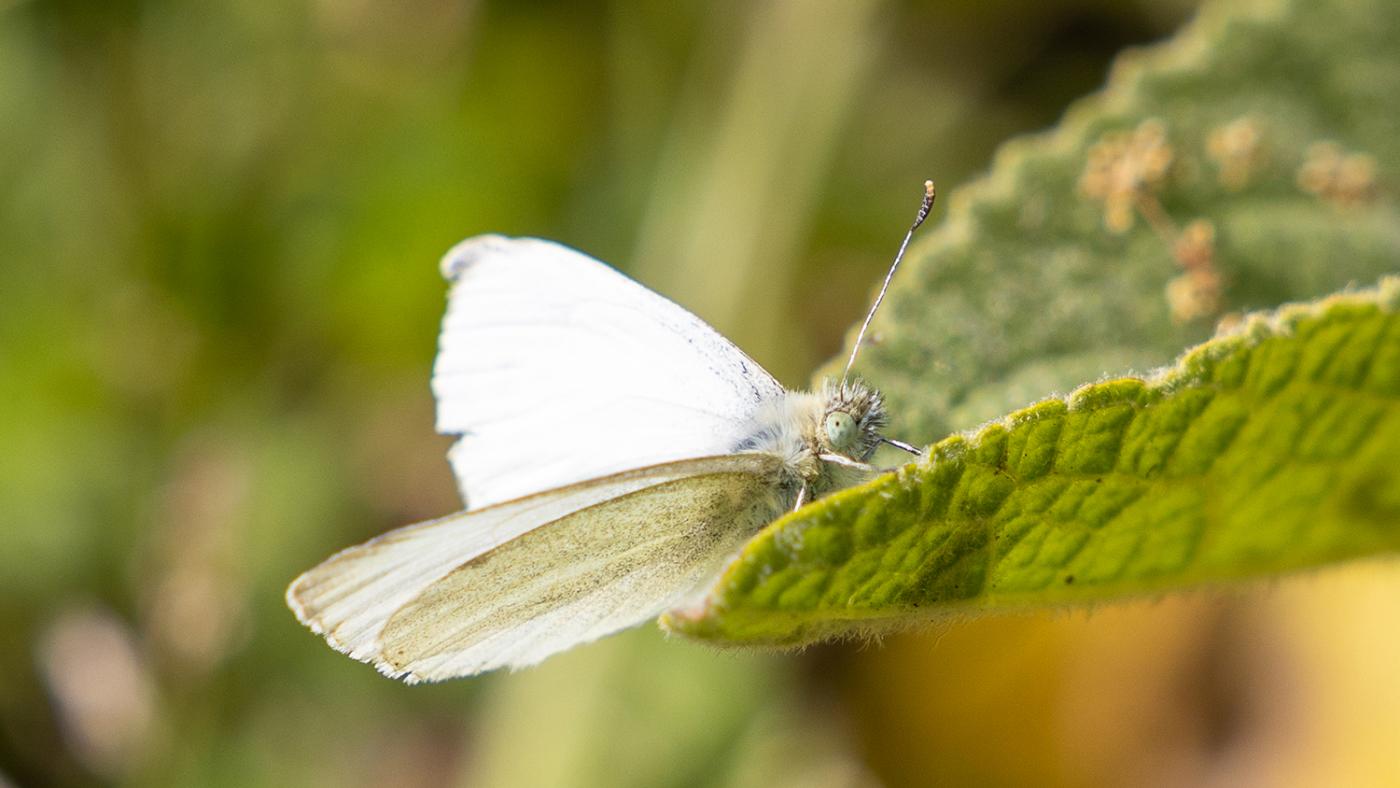
Bluethroat or sedge warbler
The university hopes that its future initiatives will cause some of the old "inhabitants" to come back and grow into a thriving population. “We've been focusing on plant and animal species that traditionally belong to the river landscape”, Raaimakers explains. In addition to the animals mentioned above, that includes grass snakes, screech owls, water plants and pondweeds, as well as butterflies like the brown hairstreak. These are called "signpost species", species whose presence indicates how well an ecosystem is functioning. According to Raaimakers, the bluethroat bird, which used to nest in the polder, is not being considered because it "needs large reed surfaces and we can’t make that happen. That's why we decided to be more practical and go for the sedge warbler, a species that is satisfied with less reed.”
The plan spells out how the environment at the Science Park can be restored so that plants and animals can establish themselves there again and thrive. For instance, the document describes measures promoting the growth of particular plants that attract insects which, in turn, attract certain birds. UU's website has an interactive map (in Dutch) showing the plant and animal species one can expect to find in each space.
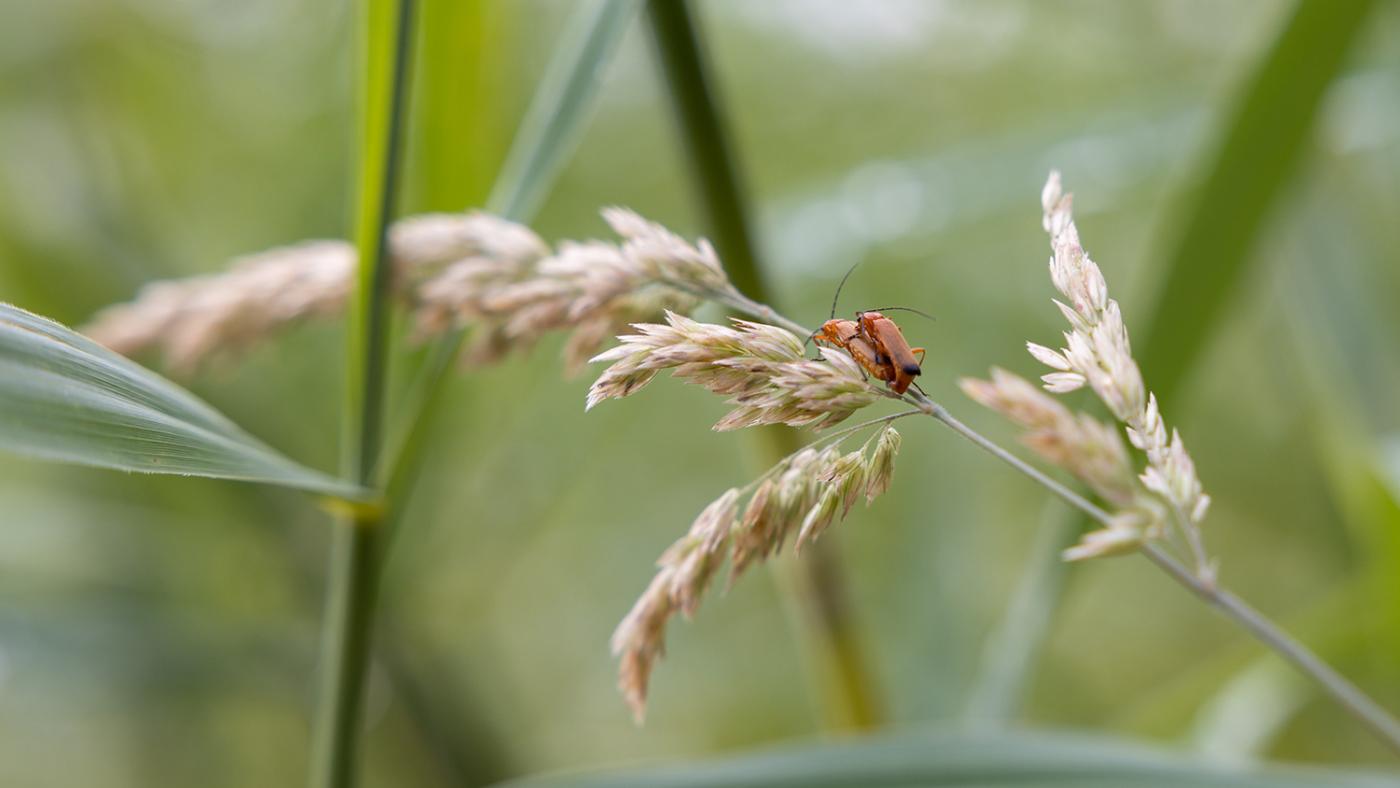
Bed and breakfast
Although the plan has been published recently, the university has been taking action to promote biodiversity for a while. For example, UU only mows the grass twice a year, allowing the plants on the roadside to grow to knee length and thus become a sort of “bed and breakfast” for insects, in the words of Raaimakers. “Mowing remains necessary, though, otherwise some plant species wouldn’t have an opportunity to grow.”
Here and there some old-fashioned wooded banks have been built, and the policy to only plant native trees and shrubs has been in place for some time. The university is paying attention to whether there is enough diversity in the species growing in the Science Park. “We have about 4,000 trees on the grounds. When one needs to be replaced, we don't have to replace it with the same type of tree. Doing this can prevent tree infections and help contain the spread of the oak processionary caterpillar.”
Among the measures that still need to be taken before 2025, one can mention building pools so that amphibians and reptiles get a larger habitat and are able to move from one estate to the other via the Science Park. There should also be more green strokes so that animals like badgers will be able to move to another estate through the campus.
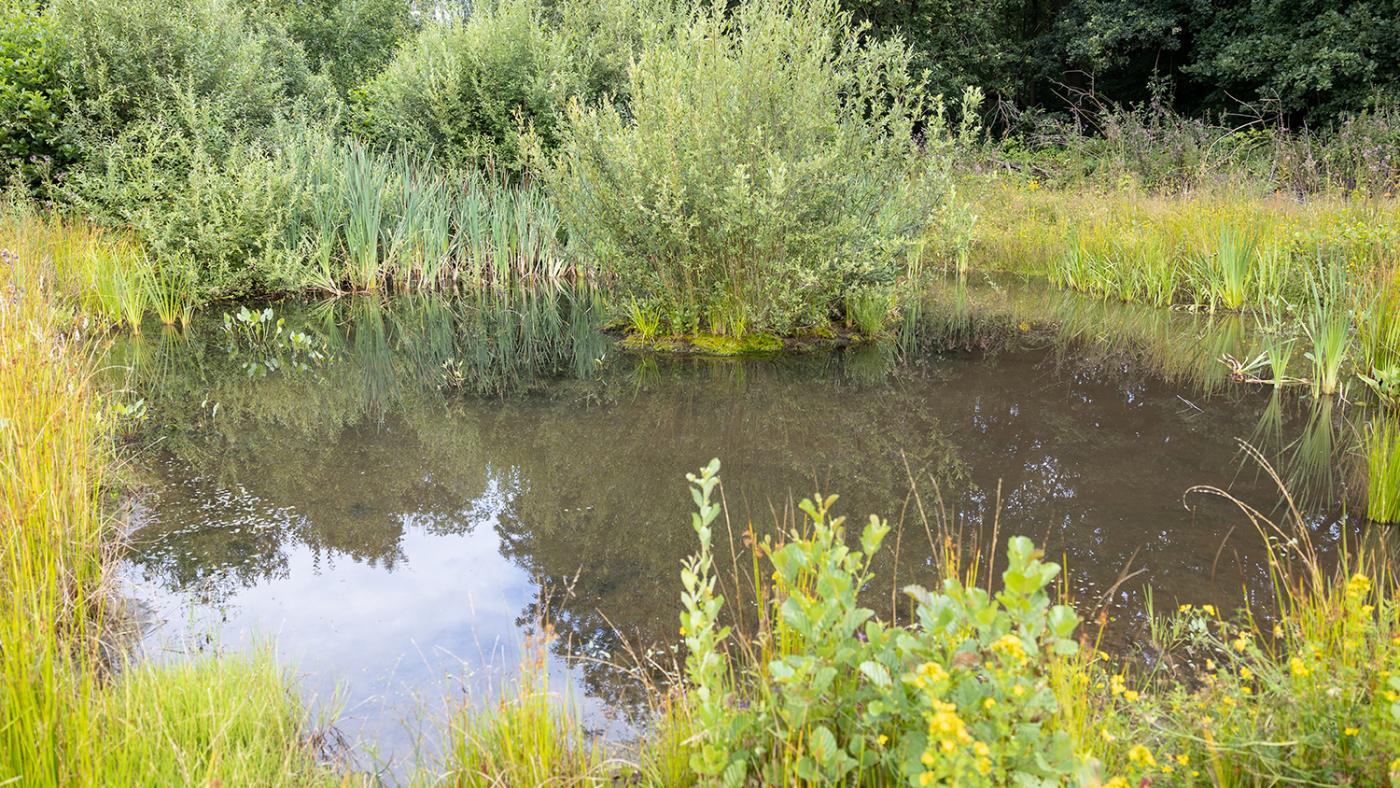
Windmills and bats
Raaimakers thinks that the increased attention to the importance of green areas in the Science Park may lead to discussions in the future. For example, there are plans to build a new student housing complex and an international school in an area that is a meadow at present, with all kinds of consequences for biodiversity. In addition, what if the university does install windmills on campus? “Windmills don’t coexist well with birds and bats. This is the type of consideration we will be encountering more often in the near future.”
The "green and blue" infrastructure should be ready by 2025. “Then, it will take at least 10 to 15 years before the plant and animal species that used to live here will have come back,” Raaimakers expects. However, there are no guarantees, according to the report penned by a consultancy firm commissioned by the university. Once these plans are executed, biodiversity is set to rise in the Science Park, but whether this will lead to a return of the "old inhabitants" is not certain. “Plants and animals have a lot of requirements for their habitat,” the experts warn. There are many elements that might cause them to eschew the Utrecht Science Park altogether as it is still an urban environment with a lot of human activity, close to highways and with light pollution. Raaimakers: “But that is no reason not to adjust the environment. The grounds will become more attractive to plants and animals and, subsequently, more biodiverse. All of these things will make the area more attractive to humans too.”
A map of the Utrecht Science Park showing biodiversity per area.
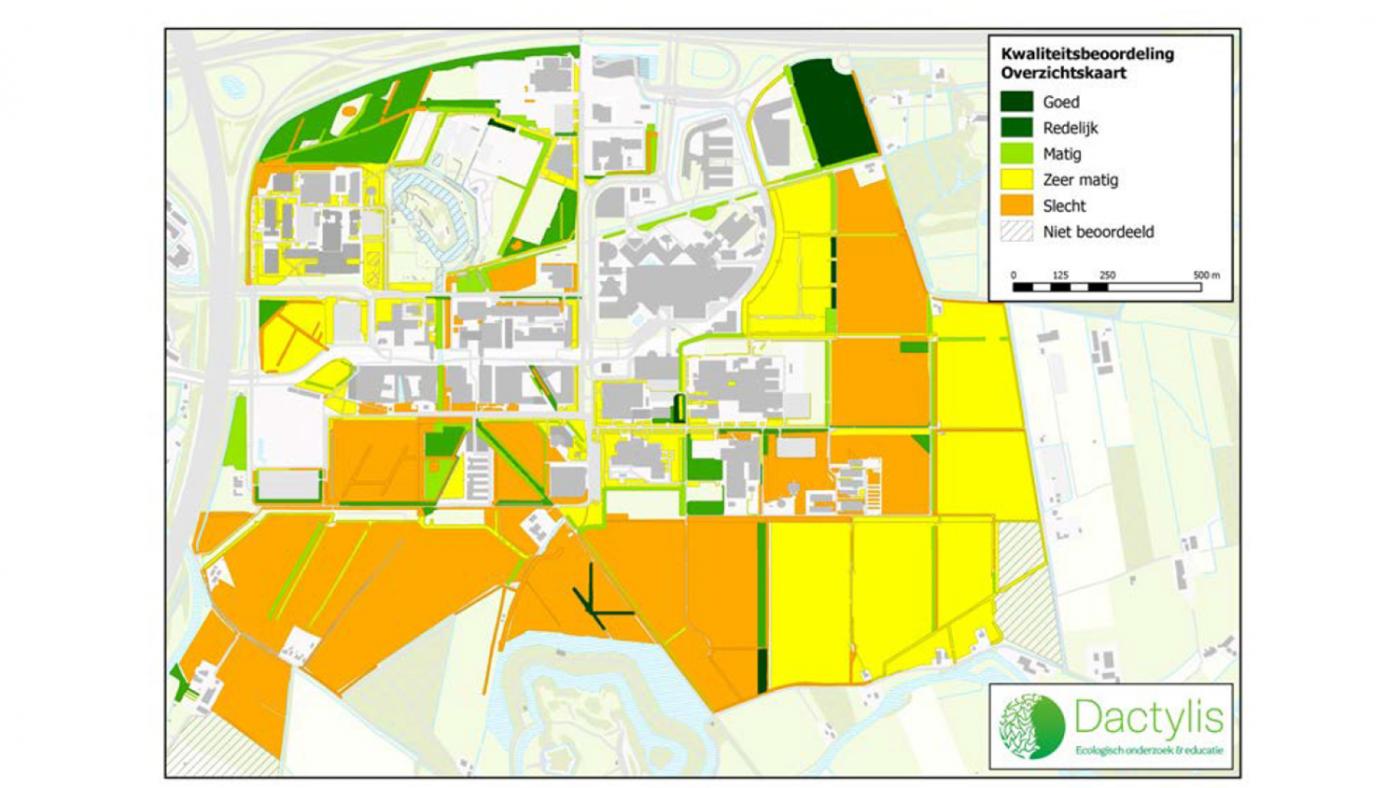
This map shows how biodiversity is distributed at Science Park today. The quality has been mapped out by the Ecological Research Agency Dactylis, which has also advised Utrecht University on how to increase biodiversity.
Map of the Utrecht Science Park showing the changes that the research agency considers feasible.
